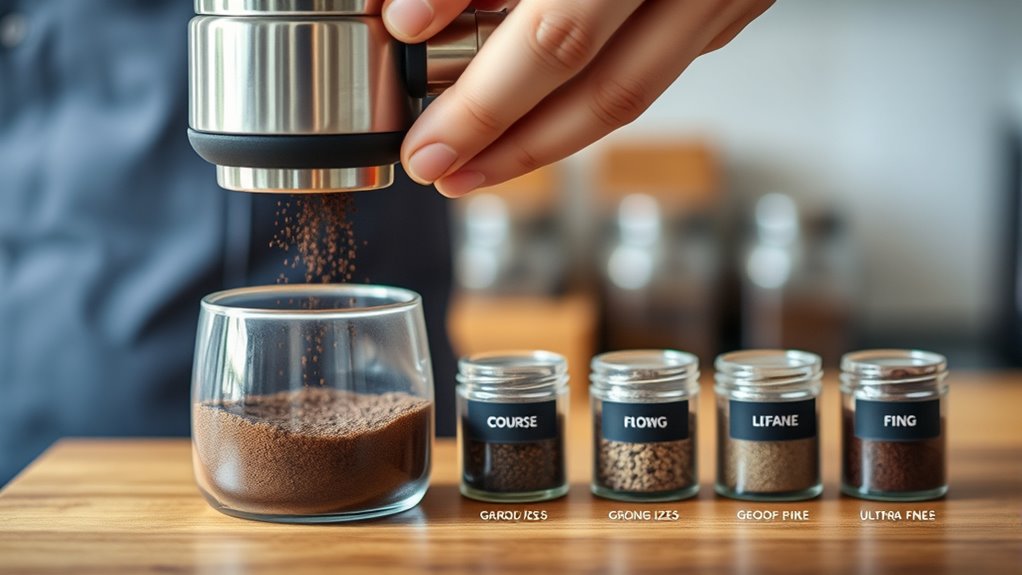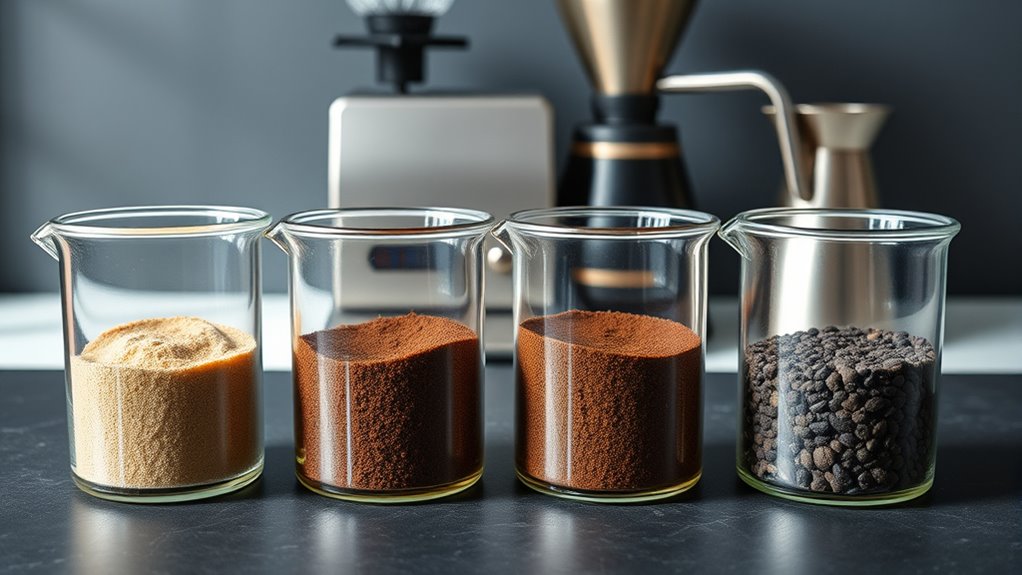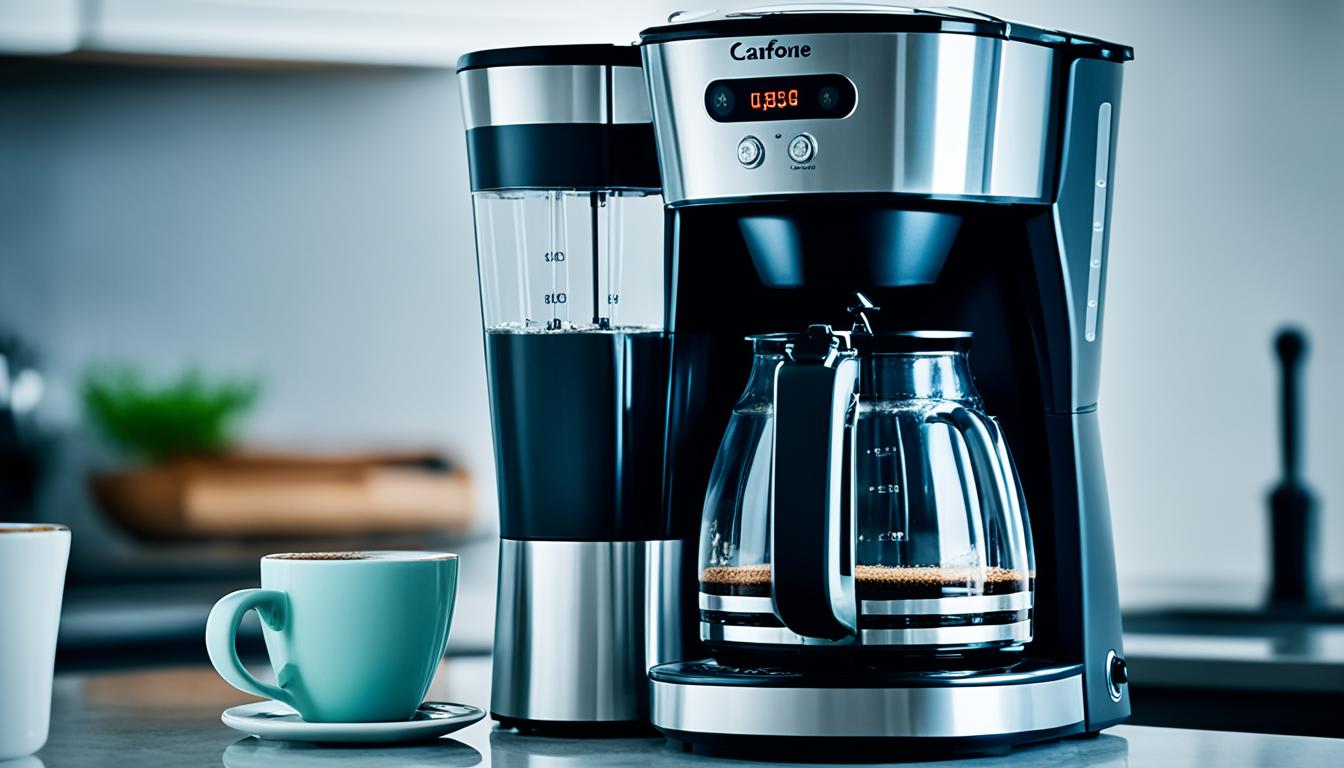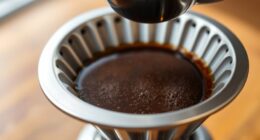Choosing the right grind size depends on your brewing method. For espresso, use a fine grind to guarantee proper extraction and avoid channeling. French press requires a coarse grind for better steeping, while pour-over and drip brewers need a medium grind for balanced flow. Consistent grind size helps prevent over- or under-extraction, leading to a better-tasting cup. Keep your equipment maintained and calibrated for the best results as you explore more techniques.
Key Takeaways
- Match a fine grind for espresso to ensure quick extraction and strong flavor.
- Use a coarse grind for French press to allow longer steeping and prevent over-extraction.
- Opt for medium grind for drip coffee and pour-over to balance extraction speed and flavor.
- Maintain consistent grind size to prevent channeling and uneven extraction in all brewing methods.
- Regularly calibrate and clean your grinder to keep grind size precise and suited to your brewing needs.

Ever wonder how the right grind size can make or break your coffee experience? It’s all about achieving the perfect balance, and that starts with understanding the importance of grind consistency. When your coffee grounds are uniform in size, water can extract flavors evenly, resulting in a richer, more balanced brew. Inconsistent grind sizes lead to over-extraction of some grounds and under-extraction of others, which can make your coffee taste bitter or weak. To maintain that perfect grind consistency, you need to pay attention to your equipment maintenance. Regularly cleaning your grinder prevents old coffee residues from clogging or affecting the grind size, guaranteeing each batch is as uniform as the first. Dull burrs or blades can also create uneven particles, so replacing or sharpening them periodically is essential for consistent results. Additionally, understanding the weight of wind turbine blades can serve as an analogy for how precise and balanced your grind should be, since both require careful attention to detail for optimal performance. Proper equipment maintenance, such as calibrating your grinder and keeping it clean, assures that you get a reliable grind size every time you brew. Neglecting maintenance can cause grind inconsistency, which directly impacts how your coffee tastes and how efficiently your equipment operates. When your grinder is well-maintained, you avoid frustrating issues like jams or uneven particles, saving you time and money in the long run. Moreover, understanding grind size precision can help you better tailor your brewing process for optimal flavor extraction. Another key aspect is understanding how to adjust your grind size based on your brewing method. For instance, espresso requires a very fine grind, while French press calls for a coarse one. But no matter the method, the consistency of your grind remains vital. A fine grind that varies in size can cause channeling in espresso machines, leading to uneven extraction. Conversely, a coarse grind for pour-over needs to be uniform to allow water to flow through evenly. Regularly checking your grind size and making small adjustments helps you dial in the perfect extraction. Remember, equipment maintenance isn’t just about cleaning; it’s about fine-tuning your grinder to keep that grind consistency intact.
Frequently Asked Questions
How Does Grind Size Affect Coffee Extraction?
When you adjust your grind size, it directly influences coffee extraction. A finer grind increases the surface area, allowing more coffee solubles to dissolve quickly, which raises the extraction rate. Conversely, a coarser grind slows down extraction, resulting in fewer coffee solubles released. This balance affects flavor, strength, and bitterness. So, your grind size is essential for controlling how much coffee solubles get extracted during brewing, shaping your perfect cup.
Can I Adjust Grind Size for Different Beans?
Imagine you’re a barista in the 1800s, experimenting with grind size. You can definitely adjust it for different beans, especially since bean freshness affects extraction. Fresher beans may need a slightly coarser grind, while older beans might benefit from a finer grind. Don’t be afraid to do some grind size experimentation—this helps you find the perfect balance for each bean, ensuring a rich, flavorful brew every time.
What Tools Help Achieve Consistent Grind Sizes?
To achieve consistent grind sizes, you should use tools like a burr grinder, which offers precise control over grind size. Regular burr grinder maintenance, such as cleaning and calibrating, helps maintain grind size consistency and prevents clogs. You can also invest in grind size measurement tools, like a scale or a grind size chart, to guarantee uniformity. Proper maintenance and quality tools are essential for optimizing your coffee brewing experience.
How Often Should I Change My Grind Size?
Imagine brewing a perfect espresso, but it tastes off. You realize your grind size calibration needs adjustment. You should change your grind size whenever you notice changes in flavor, extraction time, or when switching brew methods. Regular grinder maintenance helps keep your grind consistent, reducing the need for frequent adjustments. Typically, check and recalibrate every few weeks or after cleaning your grinder to maintain excellent performance and brew quality.
Is Grind Size the Same for Espresso and French Press?
No, grind size isn’t the same for espresso and French press. Espresso needs a very fine grind to extract rich flavors quickly, while French press uses a coarser grind to prevent over-extraction and maintain good grind uniformity. Using the correct grind size directly affects your coffee flavor, ensuring it’s balanced and full-bodied. Adjusting the grind for each method helps you achieve the best flavor profile and ideal extraction.
Conclusion
Choosing the right grind size can elevate your coffee experience, making every brew perfect. Did you know that 60% of coffee enthusiasts say that adjusting their grind size greatly improves flavor? So, experiment with different levels, and you’ll discover a brew that suits your taste perfectly. Remember, the right grind isn’t just about convenience—it’s about revealing the full potential of your coffee beans and truly savoring each sip.









